An appreciation for Noh
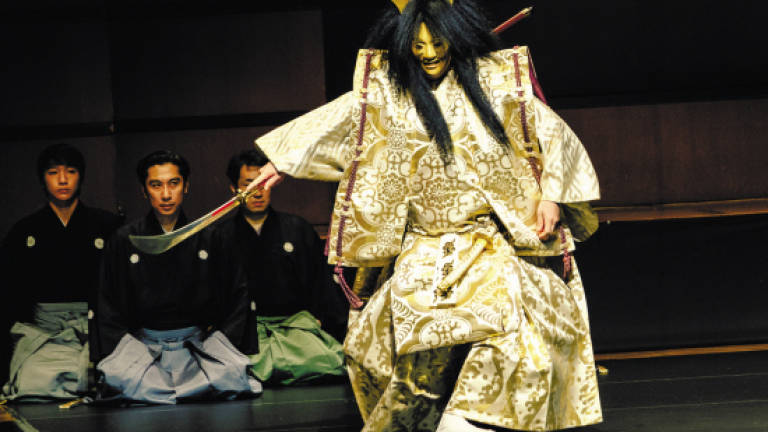
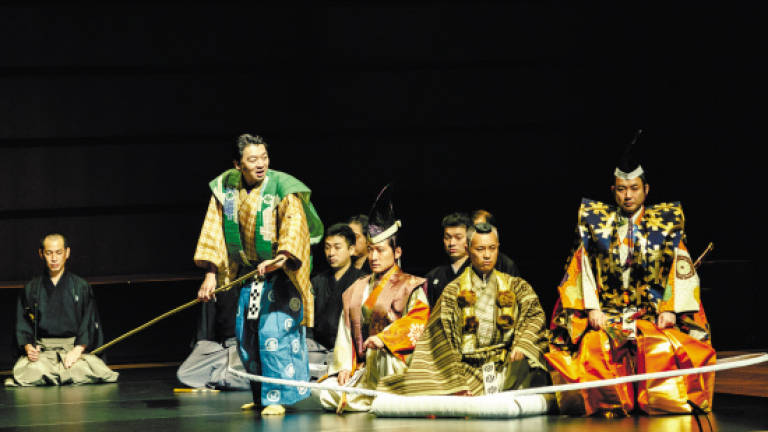
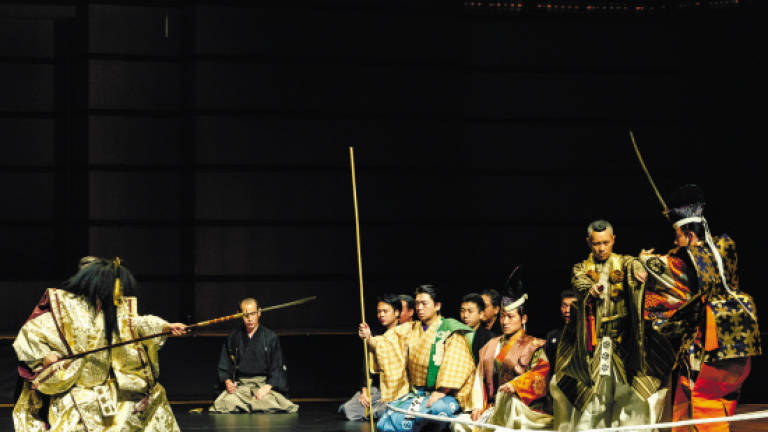
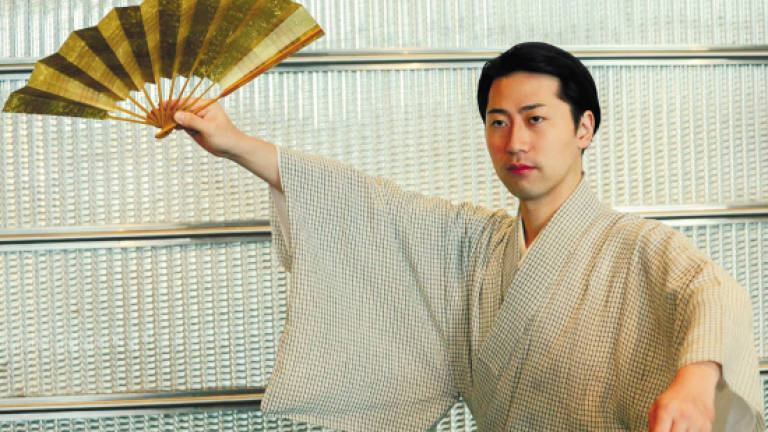
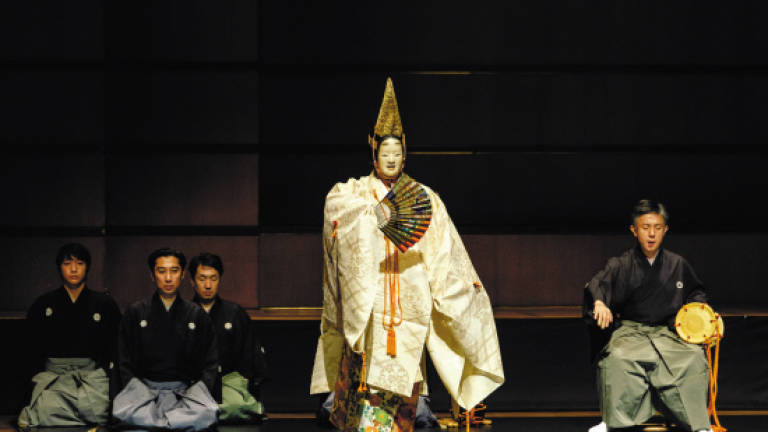
THE JAPAN FOUNDATION and the Embassy of Japan in Malaysia recently organised the first staging of a Noh theatre play in Kuala Lumpur at the Dewan Filharmonik Petronas.
The performance was part of this year’s 60th anniversary celebration of the establishment of Malaysia-Japan diplomatic relations.
This ancient Japanese art form is the oldest existing form of theatre today, having been performed in Japan since the 14th century.
There are only five schools – the Kanze, Hosho, Komparu, Kongo, and Kita – that continue to train principal actors (shite) today.
Soichiro Hayashi is the 14th-generation Noh Master of the Hayashi dynasty, one of the only five extant traditional Kanze families in Kyoto.
He was in Kuala Lumpur with his troupe to present the Noh play, Funa-Benkei (Benkei in a Boat), one of the 240 that make up the current national repertoire of Noh plays, as well as conduct a Noh workshop.
Hayashi has been training in the art of Noh theatre since he was three years old.
Now 37, the Noh Master says: “I believe that it is I who chose to be a part of Noh theatre. There are those who said ‘you are chosen for it’ as a form of compliment, but I don’t look at it that way.
“It is by my own volition that I chose Noh. And now I find that there’s nothing else I would rather do to make a living. As a result, through the art, I try to express myself.”
As the shite, Hayashi dons the masks and plays the main characters, which usually have the most complex dialogue and choreography.
Dressed in a light brown kimono, with the signature grim face and posture of a Noh thespian, Hayashi looks like a stern teacher.
He adds that he hopes to be able to pass on the legacy of Noh theatre to his two young daughters, aged four and seven.
“However, they are very playful. They like sushi, so to make them practice, I have to reward them with sushi,” says Hayashi, laughing.
Noh plays are traditionally performed on a specially-built outdoor stage. The raised platform that makes up the main stage is a square with four pillars, and a painting of a pine tree as a backdrop. A walkway (hashigakari) leads away from the far left corner of the stage.
The four pillars not only hold up a roof, but also act as visual markers for actors who wear masks, which significantly obstruct their vision.
A flat wooden floor is a must to accommodate the Suriashi, or sliding walking style of Noh.
Four musicians (hayashi) and three stagehands (kouken) sit at the back of the main stage, and the chorus (jiutai) sit at the right side of the stage while the play is performed.
Actors wear elaborate costumes, move in a stylised manner that highlights the costumes, and talk in a way that projects their voice without the use of any amplifiers.
For Hayashi, the message of Noh is about how “to be a happy person”, adding that “Noh is about world peace, love, family relations, justice, and an end to evil and wars”.
He says the play, Funa-Benkei, was chosen because “it is one of the crowd favourites. It has a love story, a beautiful dance, and an action scene”.
Before the start of the performance that night, troupe member Hiromichi Tamoi presents a brief guide on Noh and the play.
Because of this theatre’s minimalist nature, Tamoi asks the audience to “imagine the scenes”.
Widely adapted within the Noh and Kabuki circles, the story of Funa-Benkei is set in 12th century Japan after the defeat of the Taira clan at the hands of the Minamoto clan.
Despite his contributions to the victory, Minamoto no Yoshitsune, along with his retainer, Benkei, and his followers, are exiled to the far west of Kyoto by his older brother, Minamoto no Yoritomo.
Lady Shizuka, Yoshitsune’s lover, initially is to accompany the group but is later sent away. Full of sorrow, she dances, praying for his safe return.
While on a boat crossing, Yoshitsune and his followers are hit by a storm and attacked by the ghosts of the Taira clan members killed in battle.
Although Yoshitsune fights valiantly, ultimately, it is Benkei’s prayers that send the ghouls back beneath the waves from where they came.
It is quite an experience watching a Noh performance; a complexity within its simplicity.
The stylised gestures, dialogue, chants, and the music convey deep atmosphere and emotion in its minimalism. Admittedly, it is not for everyone.
The play itself is short (about 45 minutes), but by the time Lady Shizuka performs her dance, the young son of one of the guests at the play is already fast asleep.
For my part, I cannot take my eyes off the stage. Noh theatre requires the audience’s keen perception of the actor’s gestures, and the use of their imagination to fully enjoy the play.
Aside from actually going to Japan, I feel this is one of the most authentic Japanese cultural experiences I have ever experienced.
It has indeed been an honour to have met a master like Hayashi, and to have learnt so much about this unique theatre art form.
In the footsteps of a master
Noh Master Soichiro Hayashi also conducted a two-hour Noh workshop at the Akademi Seni Budaya dan Warisan Kebangsaan (Aswara) in Kuala Lumpur, together with his friend, Okura school Kyogen-kata Noh actor Ippei Shigeyama.
Kyogen, or ‘wild speaking’, is the spiritual opposite of Noh theatre. It functions as either an intermission or a component of a Noh play. It is louder, brasher, and more comical than Noh.
Hayashi explained that Noh is like the composed outer persona of a Japanese person, while Kyogen is what the person feels on the inside.
An expression of sadness or crying in Noh is shown by the actor silently tilting his head down, and moving his hand, palm open and fingers held together, towards his face. In Kyogen, the gesture is the same, but is followed by seven cries.
The workshop participants were taught how to do the Suriashi and Noh postures, which Hayashi said are used by Noh actors “to make the elaborate costumes look more beautiful”.
They also learnt the meaning behind the gestures used in Noh, as well as the stylised way Noh actors speak during a play.
Hayashi then showed how small changes and innovations have been introduced into Noh theatre over its long history, but that the masks and costumes used in a Noh performance are mostly old and handed down from one gemeration of actors to another.
“However, the costumes and masks that we brought here for the show are fairly new. They are [only] about 30 years old.”
Watch a brief clip here: